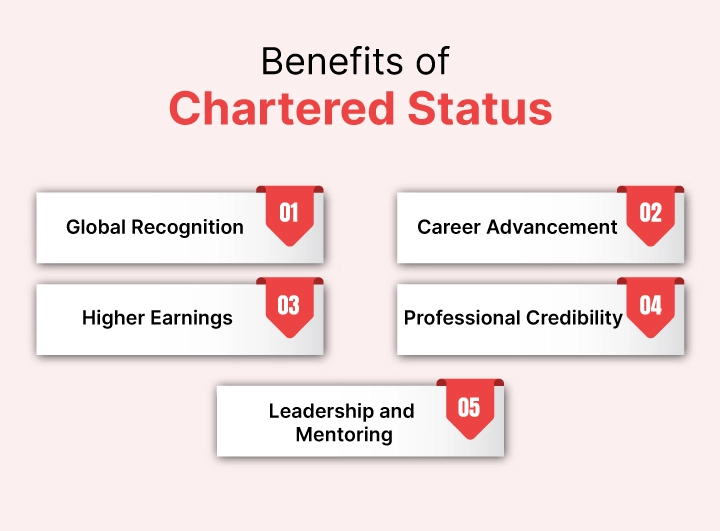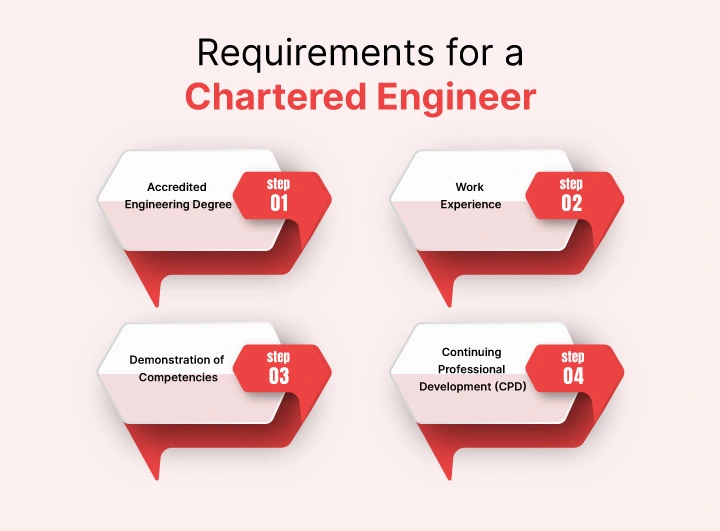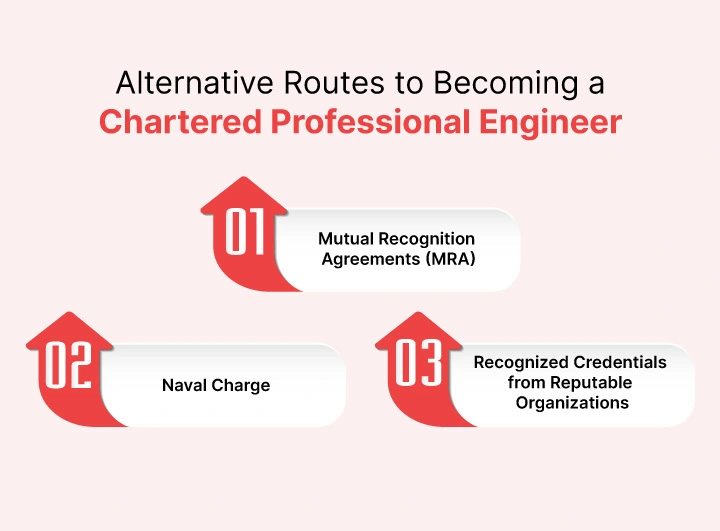Chartered Professional Engineers (CPEng) Australia

Chartered Professional Engineers (CPEng) Australia
A Chartered credential is a prestigious recognition that signifies your dedication and expertise in engineering. This qualification is highly valued worldwide, making you a sought-after professional. It can lead to career growth, leadership roles, and international opportunities.
Engineering is critical in shaping the infrastructure and technology that support modern society. Earning the Chartered Professional Engineer (CPEng) designation in Australia is a significant achievement for engineers aspiring to stand out in this dynamic field.
Recognized nationally and internationally, the CPEng qualification opens doors to career advancement, leadership roles, and the opportunity to work on high-impact projects.
In this guide, we’ll explore everything you need to know about becoming a Chartered Professional Engineer in Australia, including the benefits, eligibility requirements, application process, and how this credential can elevate your career to new heights.
What is Engineers Australia’s Chartered Professional Engineers Status?
A Chartered Professional Engineer (CPEng) is an engineer who has demonstrated a high level of competency, professionalism, and ethical practice in their field.
This prestigious certification, awarded by Engineers Australia (EA), is a benchmark of quality that reflects an engineer’s commitment to continuous professional development (CPD) and adherence to strict industry standards.
The CPEng credential is recognized globally, which means it holds weight not just in Australia but in many other countries where engineering expertise is sought after.
Engineers Australia’s Chartered Status is a prestigious international recognition for engineers who demonstrate exceptional skills, ethics, and leadership in their field. It’s a testament to their professional excellence and commitment to continuous development.
Benefits of Chartered Status

-
Global Recognition
The CPEng credential is recognized in numerous countries, thanks to mutual recognition agreements between Engineers Australia and engineering bodies in other regions, such as the UK, Canada, and the USA.
This means you can leverage your qualifications to work abroad, opening up opportunities for international projects and global career growth.
-
Career Advancement
One of the primary reasons engineers seek CPEng certification is the potential for career progression. Many employers prefer or even require Chartered engineers for senior positions, particularly in leadership or management roles.
The qualification sets you apart from your peers, signaling you possess the skills and experience necessary to take on complex projects and higher responsibilities.
-
Higher Earnings
Engineers who hold the CPEng credential often command higher salaries compared to their non-chartered counterparts. Employers value the assurance of quality and expertise that comes with the CPEng title, and many are willing to pay a premium for engineers who have achieved this distinction.
-
Professional Credibility
Achieving Chartered status demonstrates to employers, clients, and colleagues that you have reached the highest standards in your profession. It gives you credibility in the industry and can enhance your reputation as an engineer capable of delivering excellence in every project.
-
Leadership and Mentoring
Many Chartered engineers go on to assume leadership roles within their organizations. They are seen as mentors to younger engineers, and their input is often sought on key decisions.
The CPEng credential can help you move into these roles where you can influence the direction of projects, organizations, or even the industry itself.
Requirements for a Chartered Engineer

To apply for Chartered accreditation, you need to be a member of Engineers Australia and have at least five years of engineering experience. You must demonstrate and maintain competence in 16 key elements related to your occupational category and area of expertise. These elements are grouped into four main areas:
- Personal Commitment
- Obligation to Community
- Value in the Workplace
- Technical Proficiency
You may qualify for a streamlined application process if you have more than a few years of experience. Additionally, if you hold a foreign Chartered credential under a mutual recognition agreement, you may be eligible to apply, provided you can verify at least 150 hours of Continuing Professional Development (CPD) over the past three years.
To achieve Chartered Engineer status, you must also demonstrate the following qualities:
-
Accredited Engineering Degree
The first step to becoming Chartered is holding a degree from an accredited engineering program. Engineers Australia recognizes both Australian and overseas qualifications that meet its rigorous standards.
-
Work Experience
You need to have several years of professional engineering experience. While the exact number may vary depending on your field, most candidates have at least five years of relevant work experience.
This experience must demonstrate your competence in managing engineering projects, solving complex problems, and applying engineering knowledge.
-
Demonstration of Competencies
Engineers Australia has a set of 16 core competencies that you must demonstrate to qualify for the CPEng credential. These competencies cover technical expertise, risk management, leadership, communication, and ethics.
You will need to submit evidence of how you have applied these competencies in your work.
-
Continuing Professional Development (CPD)
Maintaining and expanding your professional knowledge is critical for becoming a chartered engineer.
Engineers Australia requires you to show that you are actively engaging in Continuing Professional Development (CPD) to stay current with industry trends, technological advancements, and best practices.
The process involves providing evidence statements to showcase your dedication, experience, and knowledge. Engineers Australia guides members through this process, helping them attain this globally recognized credential.
In essence, becoming a Chartered Engineer is a significant achievement that validates your engineering expertise and opens up numerous career opportunities.
The Chartered Route
To become a Chartered Engineer, Engineers Australia members follow a six-step process.
1. Self-Assessment
Applicants first evaluate their skills and knowledge against Engineers Australia’s Chartered competencies. They rate themselves on a scale from developing to advanced in the Stage 2 competencies, which differ based on their role (professional engineers, engineering technologists, or engineering associates).
These standards are available on the Engineers Australia website.
2. Industry Review
After the self-assessment, applicants gather feedback on their competencies from industry peers. If rated “functional,” they can proceed to the next step.
Those with a “Developing” rating can still initiate an industry review, seek colleague input, and prepare evidence. This process can be revisited at any time, as there are no deadlines for updates.
Who qualifies as an industry reviewer?
Reviewers must be Chartered engineers or professionals with at least seven years of engineering experience, ideally within the applicant’s field of practice.
3. Enlist in Chartered
Applicants who achieve a functional rating or higher can enroll in the Chartered Engineer program by paying the required fee and submitting their resume, CPD log, industry review, and areas of expertise in which they seek Chartered status.
4. Chartered Proof
Candidates must provide proof for the 16 competencies they evaluated, following Engineers Australia’s guidelines on acceptable evidence. Along with the evidence, they need to submit their CV, CPD log, and Areas of Practice documents.
A discussion with Engineers Australia helps clarify any evidence-related questions, after which final documents are reviewed within five weeks.
5. Professional Consultation
Once the evidence is approved, the applicant will be invited to a professional consultation, typically held four weeks after the assessment.
The one-hour interview provides a platform to present and discuss the submitted evidence with a representative from Engineers Australia and a panel of external engineers.
6. Certified Status
After the consultation, applicants will be informed of the outcome via email. Successful candidates will receive their Chartered Award and certification for their areas of practice.
If unsuccessful, Engineers Australia offers feedback and guidance for improvement, including the option to submit additional documents or attend another interview. Candidates can also appeal if they believe the decision was unfair.
Alternative Pathways to Becoming a Chartered Engineer
In certain cases, there are alternative routes to achieving Chartered Engineer status in Australia:
1. Mutual Recognition Agreements
If you already hold a Chartered credential from an overseas engineering authority, you may be eligible to apply for Chartered status in Australia through a mutual recognition agreement.
The mutual recognition page provides details on how to apply for membership and Chartered certification, along with a list of reciprocal organizations.
2. Academics
If you work in an academic role at an Engineers Australia-accredited university, you may qualify to apply for Chartered status directly. You can inquire about your eligibility and application process by sending an email.
3. Naval Charge
Active members of the Australian Defence Force may also be eligible to apply for Chartered status directly. To determine if you qualify, send an email for further details on the application process.
4. Credentials from recognized organizations
If you hold qualifications from a reputable organization in specific areas of practice, these credentials can be considered equivalent to Chartered status. For more information on how to obtain your Engineers Australia Chartered certification, send an inquiry.
Accepted credentials include
- INCOSE CSEP or ESEP (systems engineering)
- AACEI CCP, PSP, EVP, or DRMP (cost engineering)
- AMC CSAM or CFAM (asset management)
CPEng and the National Engineering Register (NER)
In addition to gaining Chartered status, many engineers choose to join the National Engineering Register (NER). The NER is a public register maintained by Engineers Australia that lists engineers assessed as competent and ethical professionals. Being on the NER adds another layer of recognition to your qualifications, making it easier for clients and employers to verify your credentials.
Maintaining Your Chartered Status
Achieving Chartered status is not a one-time event. To maintain your CPEng credential, you must continue to engage in professional development activities. Engineers Australia requires Chartered engineers to demonstrate at least 150 hours of CPD over three years. This ensures that you remain current with industry developments and deliver high-quality engineering services.
Some common forms of CPD include:
- Attending workshops, seminars, and conferences
- Completing formal education or training programs
- Participating in industry groups and committees
- Mentoring junior engineers
- Reading technical journals and industry publications
Failure to meet the CPD requirements may result in the suspension or loss of your Chartered status, so it’s essential to stay on top of your professional development throughout your career.
Alternative Routes to Becoming a Chartered Professional Engineer

While the standard pathway to becoming a Chartered Professional Engineer in Australia is well-defined, there are alternative routes available for those who meet specific criteria. These pathways offer flexibility for engineers with foreign qualifications, extensive experience, or specialized credentials in particular fields.
1. Mutual Recognition Agreements (MRA)
If you hold a Chartered credential from an engineering authority in another country, you may be able to apply for Chartered status in Australia through a Mutual Recognition Agreement (MRA).
Engineers Australia has reciprocal agreements with several international engineering organizations, allowing engineers to transfer their Chartered status without undergoing the full application process.
Mutual recognition agreements facilitate global mobility and provide a streamlined process for engineers who wish to practice in different countries. To apply, you will need to provide proof of your foreign Chartered credential and meet the continuing professional development (CPD) requirements.
Countries with MRAs with Engineers Australia include:
- United Kingdom (Institution of Engineering and Technology, Institution of Mechanical Engineers, etc.)
- United States (National Society of Professional Engineers)
- Canada (Engineers Canada)
The Engineers Australia website provides detailed guidance on how to apply for membership and Chartered status through these agreements, as well as a list of recognized international organizations.
2. Academics
If you are employed in an academic role at a university accredited by Engineers Australia, you may be eligible for Chartered status without following the traditional pathway. Academics who contribute significantly to research, teaching, and innovation in engineering can apply directly for Chartered recognition.
This pathway acknowledges the unique contributions that academics make to the profession, even if their work is not industry-focused.
To find out if you qualify and how to apply, you can contact Engineers Australia for further information. Typically, you will still need to demonstrate competence in the 16 core elements and provide evidence of your teaching, research, and professional development activities.
3. Naval Charge
Engineers who serve in the Australian Defence Force may also be eligible for a streamlined application process for Chartered status. This route is specifically designed for engineers involved in naval projects or military operations, where engineering expertise is critical for national security and defense.
Like other applicants, defense engineers will need to demonstrate their competency across the core areas defined by Engineers Australia. However, the defense-specific nature of their work may allow for alternative forms of evidence and assessment. To inquire about eligibility and the application process, applicants can contact Engineers Australia.
4. Recognized Credentials from Reputable Organizations
Certain engineering credentials from recognized organizations are considered equivalent to Chartered status. Engineers holding these qualifications may be able to apply for Chartered Professional Engineer status directly without going through the standard six-step process.
Some of the recognized credentials include:
- INCOSE CSEP or ESEP for systems engineering
- AACEI CCP, PSP, EVP, or DRMP for cost engineering
- AMC CSAM or CFAM for asset management
These credentials demonstrate specialized expertise in niche areas of engineering and are highly regarded within their respective industries. If you hold one of these certifications, you can contact Engineers Australia to learn how to transfer your credential to CPEng status.
Chartered Professional Engineer vs. National Engineering Register (NER)
While both Chartered Professional Engineer (CPEng) and National Engineering Register (NER) qualifications are highly respected, they serve different purposes within the engineering profession in Australia. Understanding the distinction between the two can help engineers decide which certification best aligns with their career goals.
1. Chartered Professional Engineer (CPEng)
The CPEng credential focuses on recognizing an engineer’s competence and expertise in their practice field. As a chartered engineer, you demonstrate not only technical proficiency but also leadership, ethics, and a commitment to continuous professional development.
Employers highly seek after the CPEng status which is often a requirement for senior roles in engineering firms or government projects.
Chartered engineers are also well-positioned for international opportunities, thanks to the global recognition of the qualification.
2. National Engineering Register (NER)
The National Engineering Register (NER) is a public database that lists engineers who have met specific professional standards set by Engineers Australia. While it does not provide the same level of recognition as CPEng, being listed on the NER can enhance an engineer’s credibility and visibility to potential employers and clients.
NER registration is often required for engineers working in regulated sectors such as construction, infrastructure, and utilities. It helps ensure that only qualified professionals are entrusted with projects that impact public safety and welfare.
Which Should You Choose?
For most engineers, becoming Chartered offers more long-term career benefits, especially in terms of leadership and international work opportunities.
However, for engineers who are focused on local projects and need to demonstrate regulatory compliance, NER registration may be sufficient. Many engineers choose to pursue both CPEng and NER qualifications to maximize their career flexibility.
Costs Associated with Becoming a Chartered Professional Engineer
The process of becoming a Chartered Professional Engineer involves several fees. It’s important to understand these costs upfront so that you can plan accordingly. The fees cover various stages of the application process, from initial assessments to final certification.
1. Application Fee
The initial application fee is required when you enroll in the Chartered program. This fee covers the cost of the self-assessment, industry review, and submission of your evidence documents. The exact fee varies depending on your area of practice and whether you are a member of Engineers Australia.
2. Professional Consultation Fee
Once your evidence has been reviewed, you will be invited to a professional consultation. There may be an additional fee for this consultation, which involves an interview with a panel of Chartered engineers.
3. Ongoing CPD Costs
After becoming a chartered engineer, you will need to engage in continuous professional development to maintain your status. This may involve costs related to attending workshops, conferences, training programs, and other CPD activities. While these costs can vary widely, budgeting for ongoing professional development is important to retain your Chartered status.
4. Annual Membership Fees
As a Chartered Engineer, you will need to maintain your membership with Engineers Australia. The organization charges an annual fee to retain your Chartered status and remain listed on the National Engineering Register (if applicable). Members benefit from access to exclusive resources, networking opportunities, and discounts on professional development programs.
Conclusion
Becoming a Chartered Professional Engineer (CPEng) in Australia is a prestigious achievement that validates your expertise, professionalism, and commitment to excellence.
Whether you’re looking to advance your career, earn international recognition, or take on leadership roles in major projects, obtaining the CPEng credential will open new doors and provide you with a significant advantage in the competitive engineering landscape.
The process of becoming Chartered may be rigorous, but the benefits are well worth the effort. From increased earning potential to global mobility, the CPEng qualification is a symbol of your dedication to the highest standards of engineering practice.
If you’re ready to take the next step in your career and join the ranks of Chartered Engineers in Australia, Engineers Australia offers a clear and supportive pathway to guide you through the process.
Whether you follow the traditional route or explore alternative pathways, becoming a chartered engineer will set you on the path to long-term professional success.

